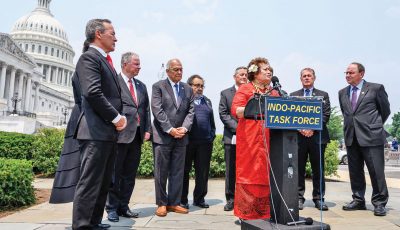Bamboo and the weather
In the movie Crouching Tiger, Hidden Dragon, warriors defying the laws of physics walk on billowing bamboo tops as they chase each other in a highly choreographed dance of Tai Chi, a remarkable feat of cinematography on the one hand, and a mythological drumming of the imagination on the other.
I stopped by Wudanshan in Shiyan Prefecture last year where the Taoist section of the Wushu martial arts of the movie was shot. From Shiyan in Hubei all the way to Fujian in the east coast are moso bamboo forests (Phyllostachys edulis, moso, or tortoise-shell bamboo, or mao zhu), remarkable for their bark’s sheen and the absence of sticky spikes. The bamboo grows like the grass it is in China’s eastern hills, plains and shores.
Living with the bamboo is an Asian source of rich metaphors. The tinkling tinikling, bamboo stick dance of my former archipelagic home, celebrates a lifestyle of avoiding the clashing bamboo branches in a storm (typhoon/hurricane) by dancing in between the clashes. Grace under pressure!
Were I Nikos sitting in Cyprus watching the clouds hovering over Olympus at a distance, I probably would not see anything across the Aegean, as I am sure the skies have become overcast like the rest of the planet. But the weather in Dong Bei in late May would have forgiven Nikos if he said that the Olympian gods had gone wild!
We already had rains in spring but I did not shelve the long john in our wardrobe, for the cold vacillated with the reluctant sun. We had a day when short sleeves left us sweating in the sweltering heat, shattered by lightning and thunder with cold winds in the early night. The following day, the sun came out strong again, until an afternoon hailstorm triggered all the automatic sound alarms in the parked vehicles to blast a discordant symphony of blaring sirens and flashing lights. Pedestrians sought cover under apartment door eaves, as umbrellas were no protection to the ice-cube sized hail that peppered parasols.
Hard rain pelted Guangdong southwest of Hong Kong, causing flooding in urban center Shenzhen. Nikos would be forgiven if he thought Zeus had been peeing under his toga and Minerva could not hold her countenance. But where rain was not needed, there was too much, and where it was needed so badly, nary was there a drop. My normal two-week spring did not last a couple of days. Summer arrived with a vengeance, making us suddenly neighbors to Taklimakan and the Gobi. My Shenyang sunroom is my solarium of potted plants. I usually sit in the morning to soak the warm rays, think and write but it turned into a Turkish spa with heat making cozy friends with my sweat pores.
The thunder and rain followed us in the wetlands of northeast Texas as storms darkened the skies and tornadoes touched down on Okie land, making an internationally diverse group gathered at a symposium on realistic living grateful for the relief from Texas heat, though fierce lightning in the night scared the bejesus out of our fragile souls. We found harsh winds in Chicago even as tornadoes wrecked homes in Wisconsin, ferocious twin twisters leveled Pilger, Nebraska, to the ground, and SD battled the twirls. Some powerful voices in Congress still find no alarm in the radical changes happening with our weather but denial has become more prominent than the river in Egypt.
The resilient bamboo grows fast and in some places is used as fancy flooring when made into plywood (plyboo@)—an eco-friendly alternative to hardwood. Full maturity happens in five years compared to hardwood that matures as long as 120 years. It is also self-renewing because the root system remains intact after harvest, preventing rapid soil erosion that follows hardwood harvests. In its natural environment, it grows without the assistance of chemicals (insecticides and pesticides). The carbon footprint in production and utilization is very low though some have criticized the transport cost since a majority of the product comes from China.
I am in no way suggesting a direct correlation between bamboo and the weather. The production of plyboo requires high urea formaldehyde (allegedly no longer used), a high dosage being a health hazard, though the material is widely used for bonding in toys. As a resin, it is a derivative from oil, so that is a plus in oil utilization. I am suggesting that where bamboo grows naturally, they can be cultivated for their eco-friendly quality rather than from the perspective of raking a profit. To be sure, activities surrounding its use have to be viable commercially to continue its use, but it is prudent not to make it a profit-making investment but rather as an inexpensive environmentally friendly ally, universally supported by the public through its governments.
As to the weather and climate change, the easy way out is denial. We are way past the option of restitution; our option is adaptive evolution, a metabolic change in the specie. We humans are resilient as the bamboo. Be pliant!



























